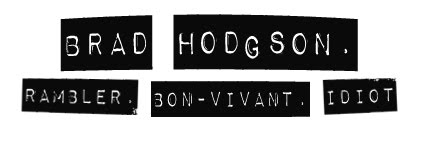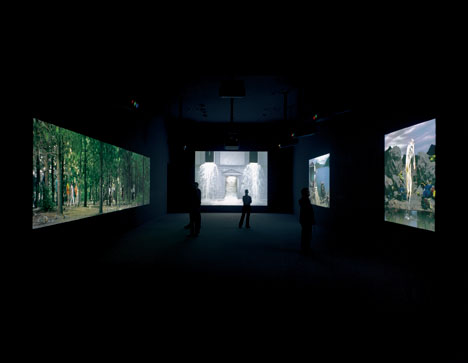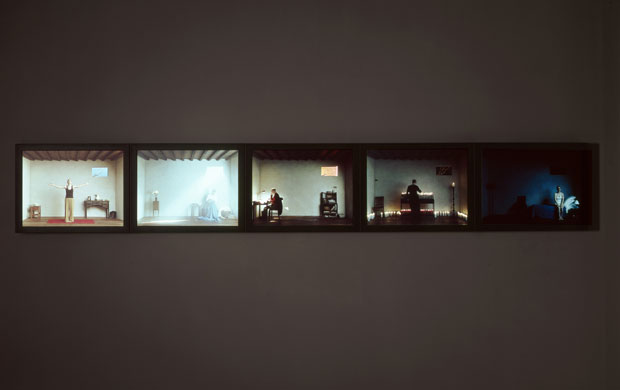As well as discussing idea's presented in yesterdays presentation (feedback above) I also got some useful feedback on my idea's and way's of progressing with them.
I guess I was able to express my idea's better in an informal manner and not crack under pressure as shown yesterday when using Prezi, wasn't as straight forward as I'd hoped.
I was keen to get idea's from another perspective
Paula picked up on my photography which
Landscape photography has been a hobby of mine, outside of my practice, for the last couple of years and I have never taken it too seriously due to the fact it is so over exposed in the digital age, with everybody able to go out there and take decent quality images.
As shown in the example above - 'over-glossy'
Aesthetic concerns, which whilst I don't want this to detract from the content of the piece the way in which I film and the look of the outcome will always be present within my work.
The moors should be covered in Trees but due to farming we are left with these vast,desolate landscapes.
As a way of further emphasizing the landscape.
Sam Taylor-Wood and her representation's of Haworth Moor, a conceptual nod to the landscape that inspired the Brontë family
Mentioned quite irreverently as purely an example of environmental documentation, I decided nonetheless to look it up anyway.
Thinking of Taylor-Woods previos work I was expecting something quite low-fi I was really pleased to discover this series of image, the image above being particularly pertinent in terms of sharing my own aesthetic visions of the piece.
Reading it made me want to get up there on the moors, with my camera, to experience the wild landscape, which was the only thing that felt redemptive in the whole novel. I wanted to feel the turbulent emotional weather of that book and the harshness of the landscape that had inspired her.
I set off in February, with my assistant, struggling unromantically across the wild moors, in heavy sleet, with lots of cameras, almost as if I intended to photograph the wind. I wanted to do something that didn't have people in but was peopled in its romanticism in our memory. It was the right time of the year to be going, in the freezing cold. I wanted to capture the sense of the unremitting weather there.
Filming was over about three days and we started work at 7am to catch the dense mist that rolls in during the morning and typifies the Yorkshire landscape, and we worked right through until dusk.
This lead's me to believe that the images were tone mapped to achieve such a dynamic range within one image,and would explain the high quality of the images. I've been looking at this process as a way of generating an aesthetically challenging image, in reference to origins of time , again leading to my notion of disorientation.
This lead's me to believe that the images were tone mapped to achieve such a dynamic range within one image,and would explain the high quality of the images. I've been looking at this process as a way of generating an aesthetically challenging image, in reference to origins of time , again leading to my notion of disorientation.
Wuthering Heights is one of those books on a list of books that you should read in your lifetime. It is amazing when you read it that there is not one redeeming feature about any of the characters. It is just unremitting pain and relentless torture of each other throughout.
I was amazed at how Heathcliff has become such a romantic figure. There is an underlying, burning passion and love that holds them together, even though it is projected in pain and misery. But within the constantly sadistic relationships and the unremitting cruelty I was trying to find in my pictures some sort of redemptive quality in that landscape, as well as capture the bleakness that those characters are set against in Brontë's novel.
All the photographs were taken in a four-mile radius of where the fictional Wuthering Heights is supposed to be set. I don't think any of the pictures are too direct in their links to the actual book. Wuthering Heights served as a backdrop. I soaked up the landscape that Brontë's inspiration came from and then made it my own. (The Independent Wednesday, 29 October 2008)
It's still sinking in how relevant this project is to my own prospective piece, 'soaking' up the landscape a piece of prose relates to. Ok, so in my case I am not dictated by location and have the artistic freedom to interpret where exactly I use in my representation, but it's refreshing to see something that backs up my thinking and which ultimately has turned out successfully.
It's still sinking in how relevant this project is to my own prospective piece, 'soaking' up the landscape a piece of prose relates to. Ok, so in my case I am not dictated by location and have the artistic freedom to interpret where exactly I use in my representation, but it's refreshing to see something that backs up my thinking and which ultimately has turned out successfully.
Stylistically the image's are very beautiful, but this doe's not detract away from the content or concept of the piece, if anything it add's to it, and this is exactly how I perceive the role of film within my piece. In yesterday's presentation the notion of whether my film would be made with 'film', came up, and my response was that I am open to experimentation if I felt it was necessary, but as discussed in today's tutorial, Super 8 and similar formats have their own very weighty connotations in terms of the era and application (i.e 60's/70's home video), which considering I want to make an ambiguous film open to as much interpretation of meaning as possible, the use of an easily recognised format such as Super 8, which I do like, may provide my film with a stigma that feel may detract away from original intentions.
The landscape we see is not necessarily 'real'.
the notion of 'what is real?'
We also briefly discussed installation as a possibility although both agreed that this is something to focus on further down the line. Nevertheless Paula brought forward Jane and Louise Wilson and Bill Viola.
Jane and Louise Wilson
His work Catherine's Room, is something I feel particularly relevant
Quite simply I intend to create something visceral and engaging, that speaks for it's self.
setting myself the target of having the film ready for May, to allow myself time to explore ways of exhibiting and other avenue's of showing the work.














